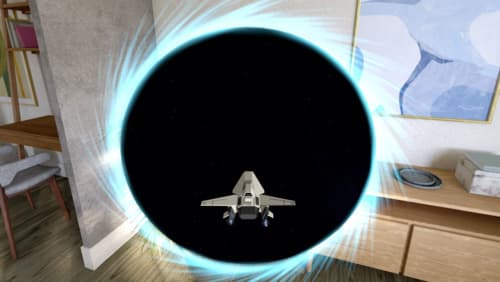What Spatial Audio advances are there?
Asked on 2024-07-27
1 search
Apple has introduced several advances in Spatial Audio at WWDC 2024, particularly in the context of RealityKit audio. Here are some key highlights:
-
Six Degrees of Freedom: Spatial audio sources now have six degrees of freedom, meaning their level and tonality are updated as either the user or the audio source moves or rotates. This creates a more immersive and natural audio experience (Enhance your spatial computing app with RealityKit audio).
-
Physically Based Distance Attenuation: As the audio source moves away from the user, the sound naturally gets quieter, mimicking real-world audio behavior (Enhance your spatial computing app with RealityKit audio).
-
Real-Time Reverb Simulation: Spatial audio sources have reverb applied to them, which is simulated in real-time based on the user's actual surroundings. This adds another layer of realism to the audio experience (Enhance your spatial computing app with RealityKit audio).
-
Directional Characteristics: The spatial audio component allows developers to set the directional characteristics of their audio sources. For example, sound can propagate in all directions or in a tight beam pattern, where the sound is quieter and darker at the rear than at the front (Enhance your spatial computing app with RealityKit audio).
-
Dynamic Loudness Manipulation: The spatial audio component also makes it easy to dynamically manipulate the loudness of an audio source. For instance, the loudness of a spaceship's engine sound can be controlled based on the throttle value, creating a more interactive and responsive audio experience (Enhance your spatial computing app with RealityKit audio).
-
Immersive Environments: Spatial audio can be used to enhance immersive environments, such as adding reverb to create a sense of space or using ambient audio for music playback to set the vibe (Enhance your spatial computing app with RealityKit audio).
For a more detailed exploration of these features, you can refer to the session Enhance your spatial computing app with RealityKit audio.

Design interactive experiences for visionOS
Learn how you can design a compelling interactive narrative experience for Apple Vision Pro from the designers of Encounter Dinosaurs. Discover how these types of experiences differ from existing apps, media, and games, and explore how to design narratives that bring audiences into new worlds. Find out how you can create stories that adapt to any space and size, provide multiple levels of interaction to make them accessible to all, and use animation, spatial audio, and custom gestures to further immerse people in your experience.

Discover RealityKit APIs for iOS, macOS and visionOS
Learn how new cross-platform APIs in RealityKit can help you build immersive apps for iOS, macOS, and visionOS. Check out the new hover effects, lights and shadows, and portal crossing features, and view them in action through real examples.

Build compelling spatial photo and video experiences
Learn how to adopt spatial photos and videos in your apps. Explore the different types of stereoscopic media and find out how to capture spatial videos in your iOS app on iPhone 15 Pro. Discover the various ways to detect and present spatial media, including the new QuickLook Preview Application API in visionOS. And take a deep dive into the metadata and stereo concepts that make a photo or video spatial.
